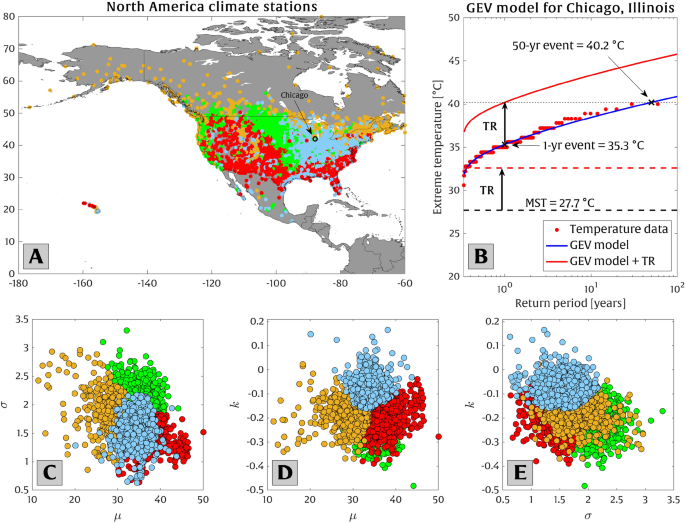- cross-posted to:
- usa@midwest.social
54
- cross-posted to:
- usa@midwest.social
Global warming in the 21st century will alter the frequency of extreme climatic events, such as high-temperature anomalies and “heat waves”. Observations of extreme high temperatures during recent decades have detected upward trends in their frequency of occurrence, and recent state-of-the-art Global Climate Models (GCMs), e.g., Climate Model Intercomparison Projects (CMIPs), notably CMIP5 and CMIP6, have predicted acceleration of temperature trends and high-temperature events by 2100 under projected greenhouse-gas emission scenarios. Hence, the 21st century is expected to experience substantial shifts in the occurrence of extreme events, where present-day, extreme-but-rare high-temperature events will become common during the summer months. The increasing frequency of extreme heat may affect the health and resiliency of social, biological, and infrastructure systems in many regions worldwide, underscoring the need for accurate and reliable long-term assessments of climatic change across global and regional scales. So far, many investigations of high-temperature extremes have been carried out under end-point scenarios, e.g., by comparing GCM-projected changes in the frequency of high-temperature extremes expected in the late 21st century to the late 20th century. In this study, we use extreme value theory and decades of observations of high-temperature extremes at thousands of meteorological stations across North America to investigate continuous shifts in the frequency of extreme high-temperature events due to projected local warming trends. We find that the odds of exceedance of 50-year extreme high-temperature events increases exponentially with increases in mean local temperature. At a majority of the stations studied here, a local mean temperature increase of 0.5–1 $$^{\circ }$$ C can double the odds of exceedance of 50-year extreme high-temperature events. Based on time-dependent temperature projections, the odds of exceedance of 50-year extreme high-temperature events doubles approximately every 20 years (or sooner) for $$\sim $$ 96% of the stations. Moreover, we find that, for $$\sim $$ 80% of the stations in North America, investigated here, the 50-year extreme high-temperature events will be exceeded annually before 2100.



If this turns out to be an extra-hot summer as the long term models are showing, and also droughty, then that will make 4 summers in a row (in my area, which is agrarian) of bad years. It will not take long to seriously damage food supplies at the rate this is going. I haven’t looked into what conditions have been like in the other breadbasket areas like the Ukraine/S. Russia, the Cone of South America, or the fertile parts of East/South Asia.